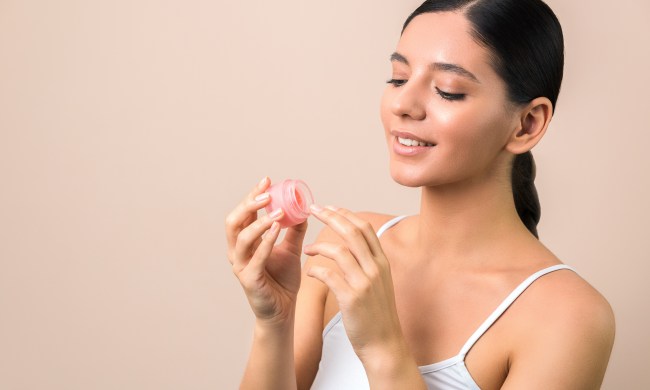Oh, glorious bangs. Bangs can be some people’s most memorable feature, making them style icons in good (looking at you Zoey Deschanel) and not so good (a la Courtney Cox in Scream 3) ways. Bangs are not limited to one hair type or style. As long as you understand your face shape and have a sense of your personal style, you can make a variety of bang types work for you.
Salon or DIY?
Have you been binge-watching bang tutorials on YouTube? There are some great and easy techniques to get simple bang styles at home, and it can be an empowering feat to take your hair into your own hands. But you need to be meticulous when giving yourself salon-quality bangs at home. It’s a good idea to learn from those who have done it themselves, too. You can pick up some helpful tips along the way. However, if you’re interested in a more complex style or don’t trust the stability of your own hands, look to a professional for help.
Everyone needs a different bang
The perfect bang matches your hairstyle, texture, and length. Even your face shape will determine what style works best for you, with a certain style complementing your strong jawline or high cheekbones. If you want to add bangs to your ‘do, talk it through with your stylist, who can walk you through the best look for your sense of style.

This being said, don’t get upset if your stylist tries to talk you into a bang that’s different than the style you envisioned. A professional will know what kind will work best for your face shape and hair kind. The bottom line, however, is that your hair is your own, so try whatever style makes you happy.
First, let’s discuss the best bang for your face shape.
Round
If you have a round face try out a style that adds sharpness to complement your softness. Now is the time to emulate Zooey Deschanel and consider the classic sharp, straight-across fringe. Be sure they land slightly below the eyebrows, as cutting straight bangs too short can leave an awkward amount of room between your hair and your eyebrows. If you’re looking for a more casual style, opt for long, face-framing side bangs, which give an angular dimension to your rounder features.
Heart shape
A curtain bang looks great on heart-shaped faces, drawing the eye to your high cheekbones. If you have an especially prominent widow’s peak. opt for a longer side-swept bang that falls naturally in the direction of your cowlick (which most widow’s peaks have).
Oval face
Because of the symmetry of an oval face, this shape is able to wear almost every bang style exceptionally well. An oval face rocks most styles providing lots of room for experimentation. Here, you can try a shorter blunt bang, like Lupita Nyong’o or Anya Taylor-Joy in The Queen’s Gambit. You can also add longer, face-framing wisps for a softer look.
 Square face
Square face
A square face pairs well with a thicker, voluminous bang, so steer clear of any short or thin bangs. Whether they are choppy, textured, or tousled, a soft bang on a square face will balance that envy-inducing sharp jawline. As always, a longer side bang can create softness just as well.
Long face
For the elongated face shape, try out a straight-across bang that is full and textured like a long Brigitte Bardot bang that covers the forehead down past the eybrows. Avoid short baby bangs that will draw the eye to the forehead and nothing else. Great bangs should frame the whole face, not just one identifying feature.
Whether you decide to cut bold, attention-grabbing bangs or a soft, face-shaping fringe, bangs are a great way to switch up your current look. It doesn’t matter if you’re in your home bathroom or a stylist’s chair; your hair is your own, and all final decisions are up to you!
Keep in mind that bangs can take a few months to fully grow out, so make sure you’re confident in your choice before the scissors emerge. In that same vein, hair is just hair! If you decide the look isn’t your speed, grow them out and try again!
BlissMark provides information regarding health, wellness, and beauty. The information within this article is not intended to be medical advice. Before starting any diet or exercise routine, consult your physician. If you don’t have a primary care physician, the United States Health & Human Services department has a free online tool that can help you locate a clinic in your area. We are not medical professionals, have not verified or vetted any programs, and in no way intend our content to be anything more than informative and inspiring.
 Square face
Square face


